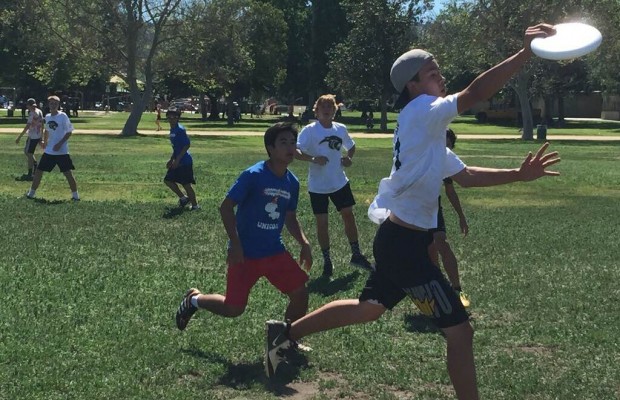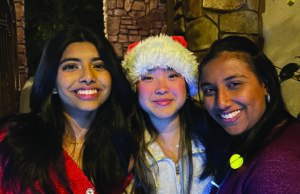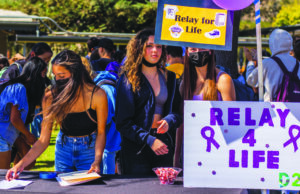Ultimate Frisbee, the Ultimate Sport

Over the last two years, Frisbee club has evolved from a group of people “throwing around a frisbee” to a competitive team.
Jonathan Cummings, senior and vice president of the club, helped to start the club last year to stay active during his volleyball off season. “It’s a great way to stay in shape and just have fun,” Cummings said. “(Ultimate frisbee is) a lot of running and cardio, which you normally don’t get in the weight room.”
Since the club began, members have worked to take it from a hobby to a sport. “Before, it was just a couple guys throwing around a frisbee, but it gradually got way more intense and competitive,” Cummings said. “It started out as just frisbee club but now it’s more (an) ultimate frisbee club.”
Twice a week, frisbee club holds open practices, allowing any student who is interested to come learn how to play. On “Frisbee Fridays”, less experienced Ultimate Frisbee players join in and the club teaches new members the basics of how to play ultimate frisbee, as well as how to throw the disc. Every Tuesday night, the club’s competitive team meets with their coach Dave Patton to practice drills and have scrimmages to prepare them for upcoming tournaments.
At these practices, the athletes learn the two ways to throw a frisbee: backhand and forehand, which Patton says are “the hardest things to learn by far” and can take up to a year to master. Kenrick James Koo, freshmen, added that “it’s not like a disc you throw for your dog.”
Koo explained that playing ultimate frisbee requires skills from several other sports, such as lacrosse, football, and basketball. According to Koo, the movement is like lacrosse, the offensive and defensive line is similar to football, and there is a pivot foot like in basketball.
“If (club members) were good players in those sports they usually transition really easily over to ultimate,” Patton said. “At that point it’s just learning how to throw.”
This year, the competitive team was able to attend their first tournament on March 16 and 17. They competed against six teams from the Southern California region and finished in fourth place. “We easily could have gotten first, but we were missing a lot of our better players due to other sports,” Cummings said.
Since ultimate frisbee is not a common sport in Southern California, there are not many teams for the frisbee club to compete against. However, in many northwestern cities, ultimate frisbee is not only popular but an official sport at most schools.
“(Some northwestern) high schools actually offer frisbee as a lettered sport for the athletes to play,” Patton said.
“I hope it comes to Southern California eventually,” Koo added.



